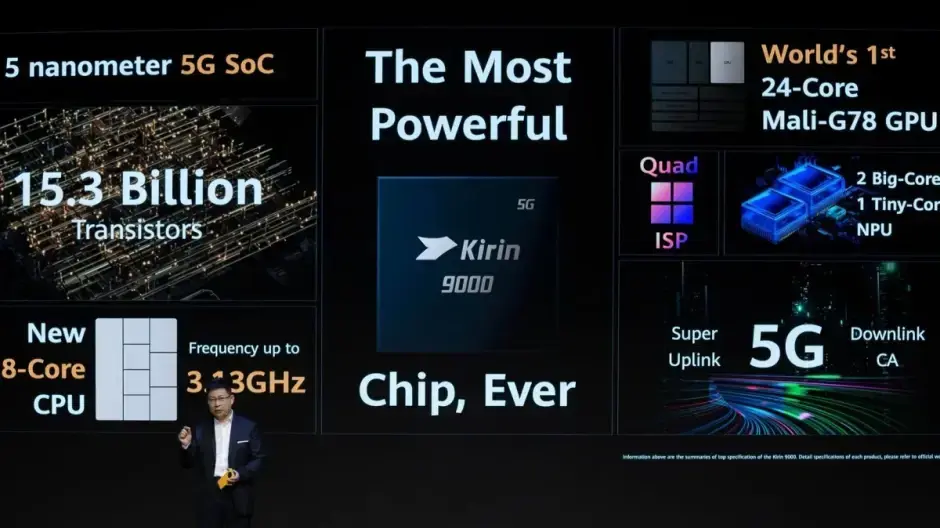In a recent twist of events, the enigmatic Kirin 9000S chipset, which powers the Huawei Mate 60 Pro, has sparked a whirlpool of discussions among tech enthusiasts and experts. Initially, it was believed that the Kirin 9000S was manufactured by China’s largest foundry, SMIC, utilizing its 7nm node technology. However, new revelations suggest a different narrative, hinting at the Kirin 9000S being a rebranded version of the 5nm Kirin 9000 chipset from 2020, produced by TSMC.
The Revelation
A tipster, known as @RGcloudS on Twitter, shed light on this perplexing scenario. Through a series of investigative tweets, he presented evidence suggesting that the Kirin 9000S chipset is essentially the Kirin 9000 chipset, originally manufactured by TSMC three years ago, and not by SMIC as previously believed. A screenshot shared by the tipster lists the Kirin 9000S as a 5nm chip. Further, a date stamp on one of the Kirin 9000S chipsets from the Mate 60 Pro teardown reveals that it was manufactured during the 35th week of 2020, reinforcing the claim that the Kirin 9000S is indeed a rebranded Kirin 9000.
Implications for Huawei and SMIC
The initial belief that SMIC was behind the Kirin 9000S’s production had raised eyebrows, especially among U.S. lawmakers and officials who had been advocating for tighter sanctions against Huawei. The backdrop to this is the expanded export rules by the U.S. in 2020, aimed at preventing foundries using U.S. technology from shipping cutting-edge silicon to Huawei without a license. The Mate 60 Pro, powered by the Kirin 9000S, stood as an exception to the trend where previous Huawei flagship series had to rely on Qualcomm Snapdragon chipsets tweaked for 4G connectivity due to these restrictions.
The revelation that the Kirin 9000S is potentially a rebranded Kirin 9000 made by TSMC brings a new dimension to the narrative, casting doubts over the previously held beliefs regarding SMIC’s capability in producing such an advanced chipset without access to extreme ultraviolet lithography (EUV) machine, a crucial technology for etching extremely thin circuitry patterns on silicon wafers.
The Road Ahead
With the new findings, there’s a brewing discussion among analysts regarding how Huawei managed to work around the U.S. sanctions. The stockpile of Kirin 9000 chipsets could explain Huawei’s ability to offer 5G connectivity in its Mate 60 Pro model for the first time since 2020. This revelation might also prompt a re-evaluation of the sanctions and export control measures in place, potentially impacting the global semiconductor landscape and the ongoing tech cold war between the U.S. and China.
In conclusion, the Kirin 9000S saga unfolds a complex narrative intertwining technology, geopolitics, and corporate strategy. As the tech community delves deeper into this matter, one can anticipate more discussions and analyses shedding light on the intricacies of global tech supply chains and the relentless pursuit for semiconductor supremacy.
Source: PhoneArena


Leave a Reply